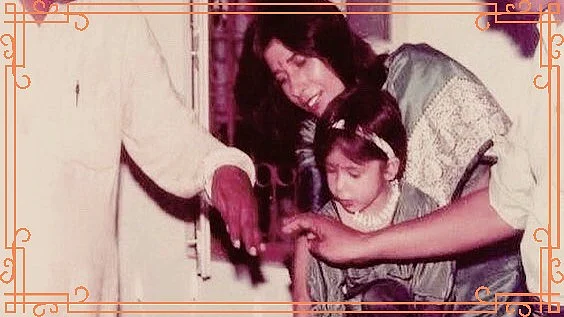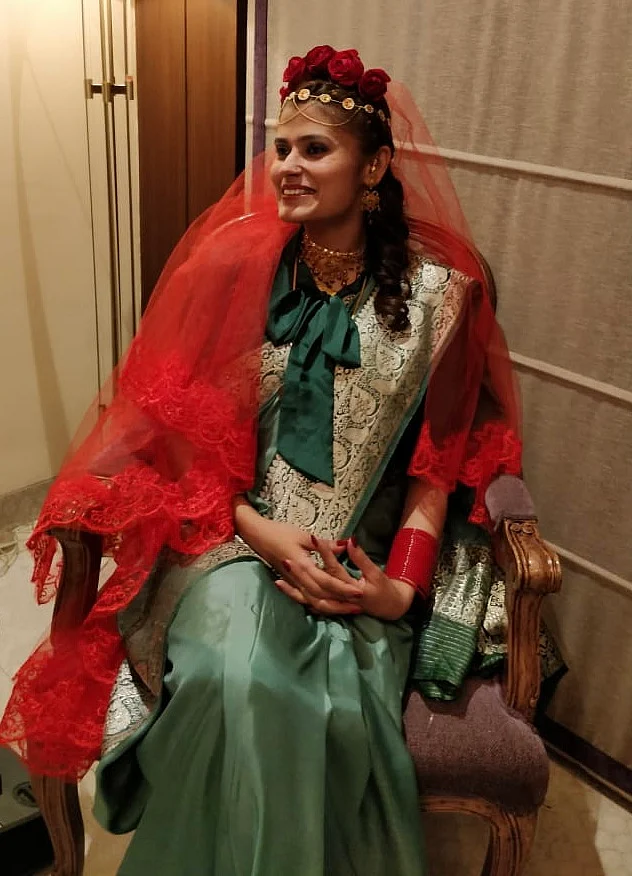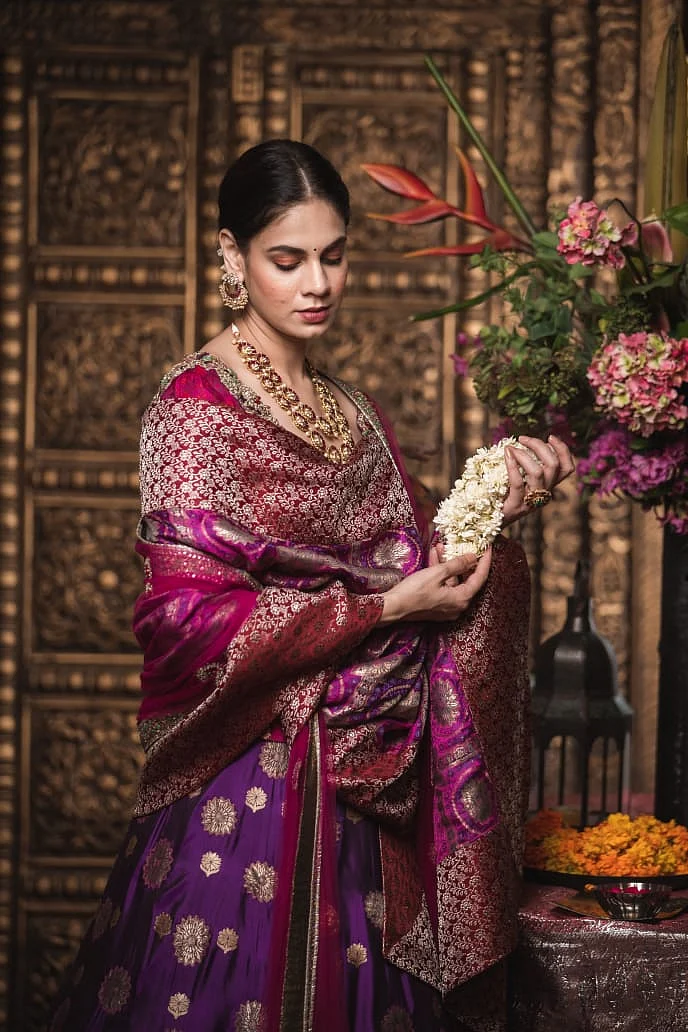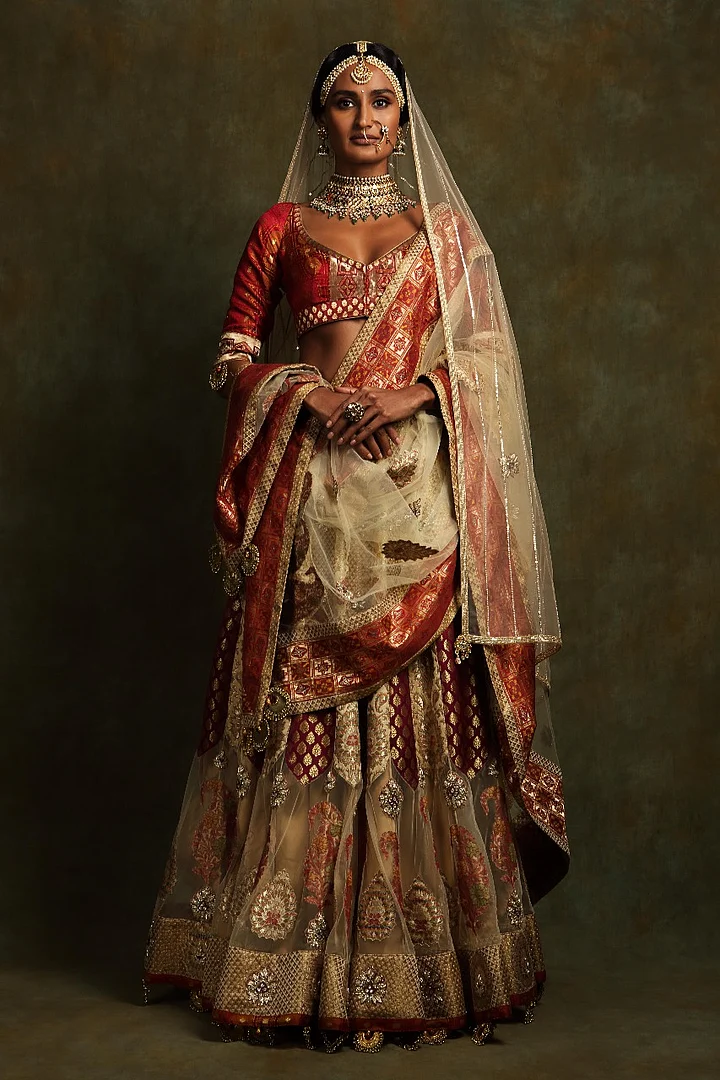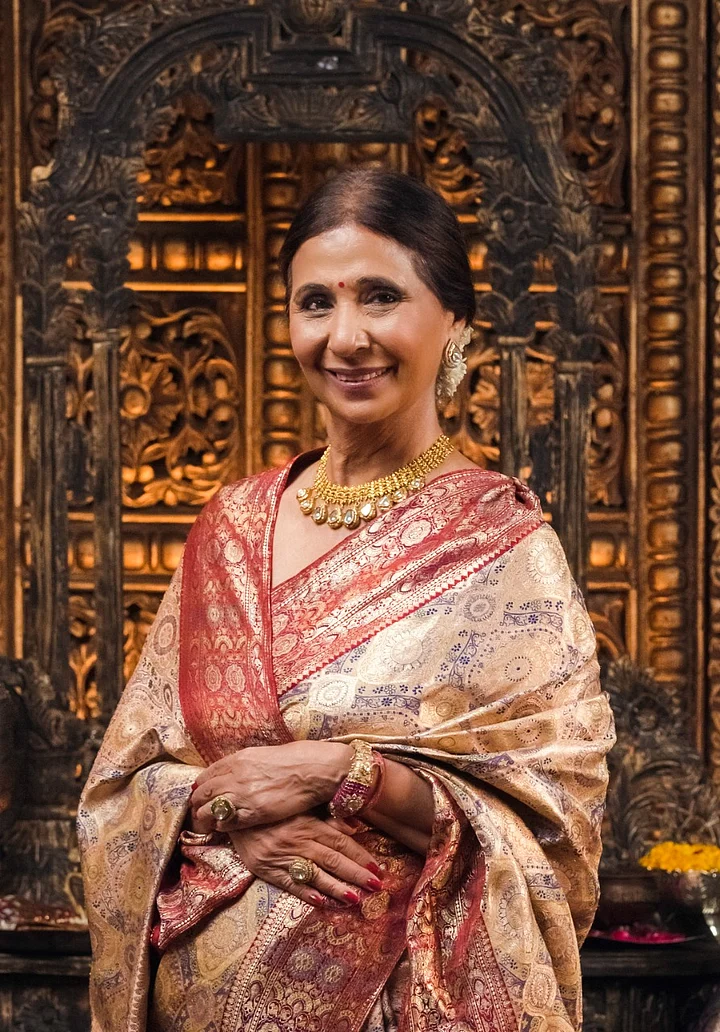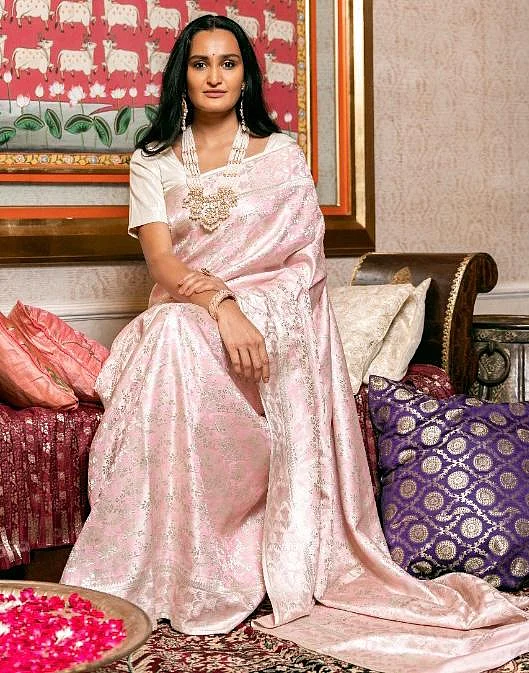My mother thought I had gone cuckoo with excitement and grief in equal measure.
I wanted to wear a saree from her trousseau for my hastily put together wedding reception—just before the COVID-19 pandemic hit the world and we all began living in our pyjamas—much to my mother's surprise. Since this was not a 'real' wedding, thanks to the din of disapproving voices leading up to the day, my mother was concerned that I was "making do" with old clothes and wasn't really happy.
She couldn't be more wrong. I was announcing to the world that I had found the most perfect partner, and I decided to do it wearing a garment that meant something to me. I was also sealing a deal with that choice: to never let go of anything that still held value, even if it meant efforts.
My reception saree took days and thousands of rupees and many man hours to get ready.
"You could have bought two new sarees with the money you spent on restoring this one."
Yes, mumma, but I could not have bought the happy memory of my third birthday when you wore this green saree with silver zari and I wore a matching suit you made from the scratch.
- 01/03
The then and now of a silk saree with silver zari.
Author's archives
- 02/03
Author and her parents. Her mother is seen wearing the same silk saree.
Author's archives
- 03/03
Th restored version of a 40-year-old saree.
Author's archives

The Magic of Rafu
Model Lakshmi Menon swears by the art and craft of rafu—the warp-and-weft process of restoring a damage piece of clothing. "Upcycling, recycling, and restoration have only now become the buzzwords in the global fashion industry. We Indian have always been living by these ideas. Even now when my mother visits me, she wants to mend or embroider my table linen to make sure nothing gets thrown out," she tells me.
Last year, Menon did a photo feature for Vogue celebrating the craft and the practitioners of rafu. "A skilled rafugar is nothing short of a magician." True, every family once had their trusted rafugars who mended not only damaged heirlooms, and favourite outfits but also broken hearts.
Menon also believes in rewearing her wardrobe and swears by vintage shopping.
In India, there is still some reservation about wearing pre-owned clothes, thanks to our class consciousness. The regional vocabulary for pre-owned clothes or accessories does anyone no favour either. Who wants utaran, after all? Definitely not Ismat Chughtai's heroines. At best, old sarees were turned into durries, mats and coasters or old handknit sweaters were unravelled to reuse the wool. Very few people are doing even those things now. New is the new new.
Fortunately, some of the A-listers in the fashion industry—like Lakshmi Menon—have been chamioning the old.
Restore At All Costs
Veteran designer Leena singh of erstwhile Ashima-Leena is the proudest of her restoration project.
No visit to her showroom at DLF Emporio or the headquarter at Chhatarpur is complete without a glimpse of an old saree being restored. "Our country is so rich in its culture, craft and heritage. Unfortunately, we see that it's fading with each passing day. It's so important to preserve and be friends of our heritage."
Singh travels across the country in search of old and rare stitched and institched garments. Many of her restored outfits belong to the erstwhile royal families of India. "I have received some rare and exquisite pieces. If we want to keep the uniqueness of Indian craft alive, we must restore them to showcase to the world. The only way to restore those pieces is by putting them back on the loom and then restoring them thread by thread."
A tedious and expensive process.
Singh replies, "That is the only way to restore it, and that's the authentic way. Otherwise, you have all these replicas in the market. To restore an authentic piece, we have to use the piece itself, put it on the loom, and then do whatever it takes. Yes, another way is to recycle if one is unable to restore them. We can always make an old garment or fabric into something new. We shred the garment and do a kind of re-weaving on that. Whatever is left can be used in different ways, like a wall hanging".
- 01/05
Restored Odhni
Courtesy: Leena Singh

- 02/05
Textile crafting—using different restored fabrics to create a new ensemble.
Courtesy: Leena Singh

- 03/05
Leena Singh (L) wearing a 19th century restored saree.
Model wearing an ensemble crafted using different restored textiles.
Courtesy: Leena Singh

- 04/05
Leena Singh proudly showcases her craft.
Courtesy: Leena Singh

- 05/05
A fully restored saree.
Courtesy: Leena Singh

Wearing 'Second-Hand' With Pride
Architect and entrepreneur Seetu Kohli represents global brands like Fendi Casa, Armani Casa, Bentley, and Ralph Lauren among others. One of her favourite outfits is the old lehnga she bought from a curiosity shop in Pushkar, Rajasthan. "I have worn almost every famous designer label in the world but this lehenga was something special. I wore it to many weddings and people always asked me if I were wearing a restored ensemble. It was old and well-preserved and I paid almost nothing for it."
Wearing someone else's clothes needs to be normalised and delinked from social status for not just sustainability purposes but also for ensuring fair trade practices. It is the demand for more and newer outfits that allows sweatshops to flourish. Buy less, buy durable and expensive, restore, recycle and exchange with friends and family. Structural anxieties around what we must be seen as possessing are turning not just our wardrobes but the very planet into a graveyard of forgotten, often unworn, garments.
